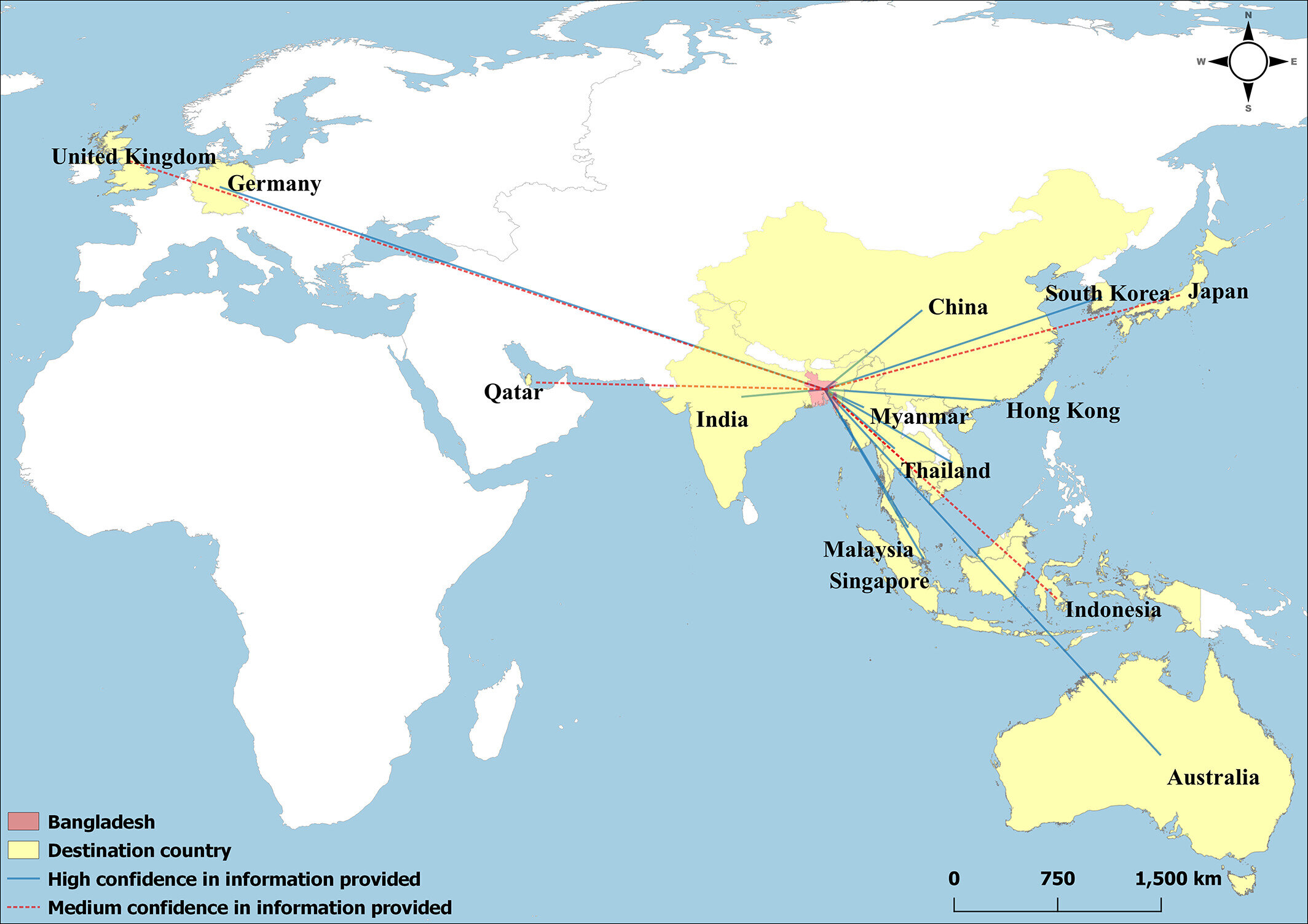According to a recent study published on Friday, Bangladesh continues to be a significant hub for the poaching of endangered tigers, despite government claims of successfully cracking down on pirate groups involved in the illegal trade.
The Sundarbans mangrove forest, located between India and Bangladesh, is home to one of the largest populations of Bengal tigers in the world.
The demand for tiger pelts, bones, and flesh on the black market contributes to an estimated $20 billion illegal wildlife trade globally each year.
A research collaboration between Panthera, a big cat conservation group, and the Chinese Academy of Sciences, revealed that tiger parts harvested in the Sundarbans have been exported to 15 countries, with India and China being the primary destinations.
Co-author of the study, Rob Pickles, stated, “Bangladesh plays a much more significant role in the illicit tiger trade than we previously realized.”
Although the government crackdown on pirate groups operating in the Sundarbans began in 2016, the study found that the vacuum created by the crackdown has been filled by more than 30 specialist tiger poaching syndicates and opportunistic poachers.
These traders have established their own logistics companies and often conceal their activities through licenses for legal wildlife trade.
The study, which includes interviews with individuals involved in the wildlife trade, also revealed an increase in domestic consumption of tiger parts in Bangladesh due to the country’s growing economy.
Wealthy local buyers are purchasing tiger parts for medicinal purposes and as display items such as skulls and skins.
However, these findings have been disputed by Abu Naser Mohsin Hossain, the official Sundarbans conservator in Bangladesh, who claims that the crackdown has effectively halted the illicit trade.
According to an official census published in 2019, there are only 114 Bengal tigers living in Bangladesh’s portion of the Sundarbans, slightly higher than the record low of previous years.
A updated population count is expected to be published next year.
Poaching remains the greatest threat to tigers worldwide, with China being the largest driver of demand, particularly for their body parts used in traditional medicine, according to Panthera.
More information:
Nasir Uddin et al, Tigers at a crossroads: Shedding light on the role of Bangladesh in the illegal trade of this iconic big cat, Conservation Science and Practice (2023). DOI: 10.1111/csp2.12952
© 2023 AFP
Citation:
Bangladesh major hub for tiger poaching: study (2023, July 29)
retrieved 29 July 2023
from https://phys.org/news/2023-07-bangladesh-major-hub-tiger-poaching.html
This document is subject to copyright. Apart from any fair dealing for the purpose of private study or research, no
part may be reproduced without the written permission. The content is provided for information purposes only.
Denial of responsibility! TechCodex is an automatic aggregator of the all world’s media. In each content, the hyperlink to the primary source is specified. All trademarks belong to their rightful owners, and all materials to their authors. For any complaint, please reach us at – [email protected]. We will take necessary action within 24 hours.

Jessica Irvine is a tech enthusiast specializing in gadgets. From smart home devices to cutting-edge electronics, Jessica explores the world of consumer tech, offering readers comprehensive reviews, hands-on experiences, and expert insights into the coolest and most innovative gadgets on the market.


